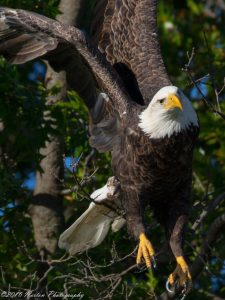DOVER, DE (Jan. 20, 2023) – The Delaware Division of Public Health’s (DPH) Office of Animal Welfare (OAW) announces the arrest of a sixth man involved in a Seaford dog fighting incident from January 8. OAW charged Laurel, DE, resident Ronnell Jacobs, age 45, with three felony counts related to dog fighting, and two misdemeanor counts of animal cruelty. This arrest is in addition to the five previous individuals arrested on January 8 who have since posted bail.
Ronnell Jacobs is currently being held without bail for a Violation of Probation related to his January 12 arrest on dog fighting and animal cruelty charges, but not as a result of the charges themselves, for which he was released on his own recognizance. He remains incarcerated at Sussex Correctional Institution. He is ordered to have no contact, possession, or ownership of any animals pending the outcome of the case. Mr. Jacobs was arraigned on Jan 12 on the following charges:
- Two counts owning, possessing, keeping or using an animal for the purpose of fighting
- One count being present at an animal fight
- Two counts of cruelty or neglect to animals
On January 8, Delaware State Police (DSP) and OAW responded to the 2600 Block of Lonesome RD in Seaford for suspicious activity and found multiple people at the property actively engaged in dog fighting. Five people were apprehended at the scene, while others fled on foot. During the investigation, OAW officers discovered information concerning the identity and location of Jacobs, who fled the scene at the time. He was found to be under the supervision of the Department of Corrections’ Probation and Parole Office and wearing an ankle monitor. A review of the suspect’s location on the date and time of the dog fighting incident place put him at the Lonesome RD property.
On January 12, OAW obtained a search and seizure warrant for the suspect’s Laurel residence, where 4 dogs were seized, two of which were found chained in the woods behind the home and had injuries consistent with dog fighting. The dogs are in the care of Brandywine Valley SPCA. Upon seizure, two dogs required emergency veterinary care. One of the dogs that required emergency veterinary care was determined to be unable to recover from their wounds and euthanized. The dogs are being monitored and evaluated by BVSPCA medical staff.
To date, 18 dogs were rescued as a result of this investigation. Three dogs have died, two dogs have been adopted. The other dogs continue to recover; some soon ready for medical and behavior evaluation before they are released to be adopted.
The investigation is ongoing and anyone with information regarding this case should contact OAW at 302-255-4646.
Animal Cruelty Complaints
Cruelty and neglect of animals is against the law (https://delcode.delaware.gov/title16/c030f/index.html). If you are concerned about an animal’s welfare and suspect cruelty or neglect, contact OAW immediately, at 302-255-4646 or report concerns online at https://animalservices.delaware.gov/report_violation/25 .
###
The Delaware Division of Public Health (DPH), a division of the Delaware Department of Health and Social Services, is a nationally accredited public health agency recognized by the Public Health Accreditation Board for its outstanding dedication to driving change through innovation. DPH is committed to improving the quality of the lives of Delaware’s citizens by promoting health and well-being, fostering self-sufficiency, and protecting vulnerable populations.
Anyone who is deaf, hard of hearing, Deaf-Blind, or speech-disabled can contact DPH by first dialing 711 using specialized devices (i.e., TTY, TeleBraille, voice devices). The 711 service is free; to learn more about how it works, visit delawarerelay.com.
 The new Outdoor Delaware online magazine, launched today, is the go-to guide to enjoy and learn about animals, nature, science, adventure, conservation and many other topics. It is produced by the Delaware Department of Natural Resources and Environmental Control.
The new Outdoor Delaware online magazine, launched today, is the go-to guide to enjoy and learn about animals, nature, science, adventure, conservation and many other topics. It is produced by the Delaware Department of Natural Resources and Environmental Control.